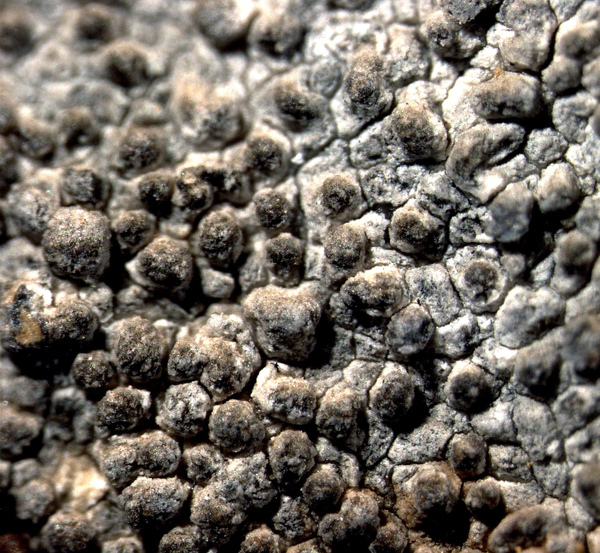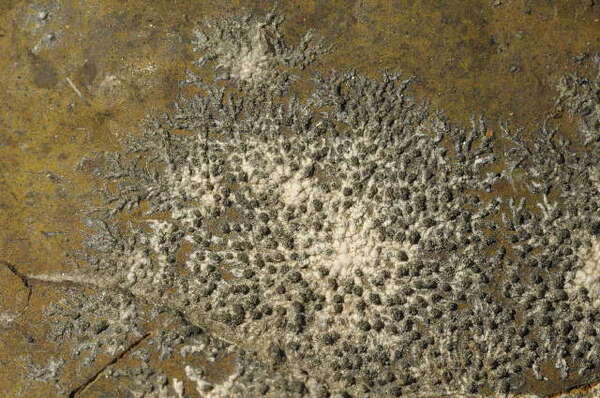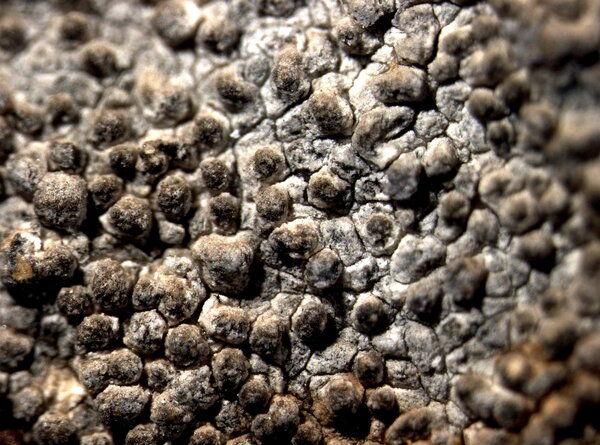Aspicilia mashiginensis (Zahlbr.) Oxner
Nov. Sist. Niz. Rast., 9: 289, 1972. Basionym: Lecanora mashiginensis Zahlbr. - Rep. Sci. Res. Norweg. Exped. Novaya Zemlya: 20, tab. 3, fig. 2, 1921.
Synonyms: Aspicilia bennettii (Lynge) J.W. Thomson; Aspicilia cinerea f. papillata Arnold; Aspicilia mastrucata auct. eur. merid. non (Wahlenb.) Ach.; Lecanora bennettii Lynge; Oxneriaria mashiginensis (Zahlbr.) S. Y. Kondr. et L. Lőkös
Distribution: N - Frl (Tretiach & Hafellner 2000), TAA (Nascimbene & al. 2022), Lomb (Nascimbene & al. 2021), Piem (TSB 33157), Emil (Fariselli & al. 2020).
Description: Thallus crustose, episubstratic, forming small, 1-2 cm wide rosettes, areolate, pale to dark grey or brownish grey, sometimes delimited by a black prothallus, but most often distinctly lobed and almost placodioid, the central parts with 0.2-0.4 mm thick, isidia-like, cylindrical, simple or sparingly branched papillae which sometimes give rise to apical soralia. Medulla white, I-. Apothecia lecanorine-aspicilioid, very rare, 0.2-0.5(-1) mm across, immersed to slightly protruding, with a black disc and a thin, poorly evident, sometimes sorediate thalline margin. Asci 8-spored, clavate, the thin outer coat K/I+ blue, the wall and apical dome K/I-. Ascospores 1-celled, hyaline, ellipsoid, 12-27 x 8-15 µm. Pycnidia black, immersed. Conidia 12.5-19 µm long. Photobiont chlorococcoid. Spot tests: thallus K-, C-, KC-, P-; medulla K+ intensively yellow. Chemistry: substictic acid in the medulla. Note: on basic siliceous rocks, often on weakly calciferous schists, in humid-shaded situations near and above treeline, up to the nival belt; to be looked further throughout the Alps. For further information see Tretiach & Hafellner (2000).
Growth form: Crustose placodiomorph
Substrata: rocks
Photobiont: green algae other than Trentepohlia
Reproductive strategy: mainly asexual, by isidia, or isidia-like structures (e.g. schizidia)
Commonnes-rarity: (info)
Alpine belt: rare
Subalpine belt: very rare
Oromediterranean belt: absent
Montane belt: absent
Submediterranean belt: absent
Padanian area: absent
Humid submediterranean belt: absent
Humid mediterranean belt: absent
Dry mediterranean belt: absent

Predictive model
Herbarium samples
Growth form: Crustose placodiomorph
Substrata: rocks
Photobiont: green algae other than Trentepohlia
Reproductive strategy: mainly asexual, by isidia, or isidia-like structures (e.g. schizidia)
Commonnes-rarity: (info)
Alpine belt: rare
Subalpine belt: very rare
Oromediterranean belt: absent
Montane belt: absent
Submediterranean belt: absent
Padanian area: absent
Humid submediterranean belt: absent
Humid mediterranean belt: absent
Dry mediterranean belt: absent

Predictive model
| Herbarium samples |
 INDEX FUNGORUM
INDEX FUNGORUM
 GBIF
GBIF
 DOLICHENS
DOLICHENS







